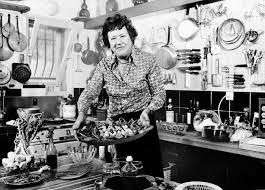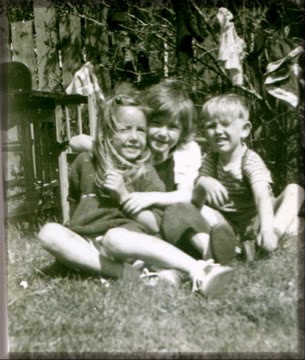This week's prompt suggests kitchens, pies, colour slides. Pardon the Canadian spelling.
 I thought about this photo of Julia Child in her kitchen in "La Pitchoune", her house in France in Provence, not far from Grasse. The room as described in Travel and Leisure: "The walls are covered with Peg-Board, upon which hangs an armory of cooking equipment: saucepans and frying pans of all sizes, ladles, spoons, sieves, and springform cake pans, whisks, mallets, can openers, corkscrews, and measuring cups, knives, scissors, colanders, potato ricers, and a hand-cranked meat grinder. Each object is outlined in black, so when you take something down, you know exactly where to put it back."
I thought about this photo of Julia Child in her kitchen in "La Pitchoune", her house in France in Provence, not far from Grasse. The room as described in Travel and Leisure: "The walls are covered with Peg-Board, upon which hangs an armory of cooking equipment: saucepans and frying pans of all sizes, ladles, spoons, sieves, and springform cake pans, whisks, mallets, can openers, corkscrews, and measuring cups, knives, scissors, colanders, potato ricers, and a hand-cranked meat grinder. Each object is outlined in black, so when you take something down, you know exactly where to put it back." |
| La Pitchoune - you can rent it! |
Ah....the good old days.
 |
| What a great guy! |
 |
And finally, here's my nephew's mother and me at a cooking school in Bali earlier this year. Zuzu has an enormous repertoire of chicken recipes she perfected when her kids were growing up. Now she cooks mostly for pleasure or when it's a novelty, or a cultural experience as it is in Bali. Or when the recipes involve plenty of wine and the conviviality of chopping away with your good friends and people you love.
| Debra taking the second chopping shift. |
After our delicious Balinese lunch, we escaped with no dish washing duty. I shudder to think of how the kitchen might have looked after preparing meals in 1896 when this dishwasher was offered for sale.
And an added bonus - the modern woman's guide to roasting chicken,
Roast Chicken with Garlic, Shallots, and Potatoes
6 servings
Drive to Costco. Park and enter store, showing membership card at door. Walk to deli department and purchase perfectly roasted chicken for $4.99. Drive home and portion onto paper plates. If possible select a modern craft beer to serve with the chicken. Perhaps a pleasant feminine brew like My Asis.
1 3½ to 4 pound chickensalt and freshly ground pepper1 bunch fresh thyme or rosemary1 bay leafolive oil1½ pounds small red potatoes, washed2 heads garlic, cut in half, crosswise6 large shallots, root ends trimmed1 cup chicken stock





































